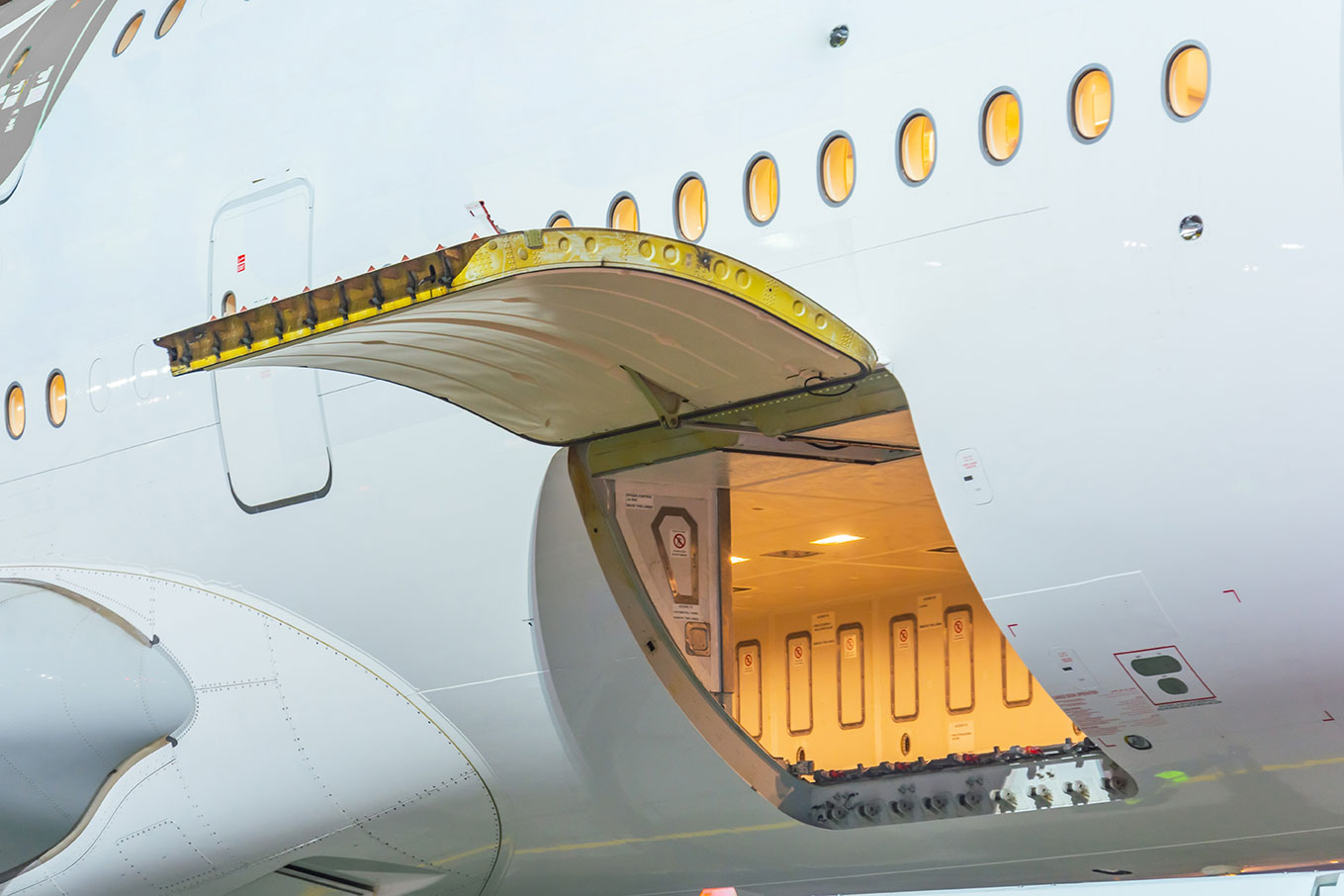
AAE’s proven cargo compartment fire protection system provides both early detection and suppression to save lives and property.
CARGO SMOKE DETECTION
The Lower Cargo Compartment Smoke Detection System is designed to detect and provide aural and visual annunciation to the flight crew of a smoke and/or fire condition in either lower deck cargo compartment. The typical AAE “dual loop” smoke detection system uses our dual-channel smoke detectors in combination with our control panel (CDSCP), interface tray assembly, fault panel assembly, smoke detector enclosures and guard bars, and the necessary pre-assembled interconnecting wiring harnesses.
AAE FPS Kits are delivered with dual-channel smoke detectors. An internal microprocessor in the smoke detectors enables detection and analysis of a wide spectrum of smoke particles, ensuring a significant reduction in false alarms. No false alarms have been reported in almost 14 years of operation and hundreds of millions of detector flight hours!
To be conservative, the typical detector response times are based on tests of the largest forward and largest aft cargo compartments found in narrow-body aircraft where the distance from the potential smoke source to the detectors is the greatest. Also, the response times are with a deck angle between level and +2.5 degrees nose up, which represent the deck angles en route and in shallow descents.
The AAE Detection System has a typical detection response time in the range of 7 to 17 seconds when the smoke source is in the worst possible location in the aft or forward compartments.
CARGO FIRE SUPPRESSION
AAE aircraft fire suppression systems use a cargo detection / suppression control panel (CDSCP) that combines detection and suppression annunciation, and their operation, in the same panel. Performance of the AAE Aircraft Fire Suppression System to FAA and EASA requirements in a typical aircraft application will provide a duration of protection ranging from 1 hour to more than 4 hours, depending on the aircraft operational requirements and the customer’s selected options.
AAE’s STCs include FPS configurations that meet the higher performance suppression requirements (ie, point-to-point) of EASA (ref. CS 25.851) that require a minimum of 3% concentration at each point in the cargo compartment.
The AAE metering device used in the FPS installed on narrow-bodied aircraft regulates the flow of extinguishing agent from the suppression bottles for the required duration of protection. The metering valve is set to replace the agent leaking from the compartment at the rates determined by certification flight tests of airworthy cargo compartments on aircraft with normal wear and tear.
